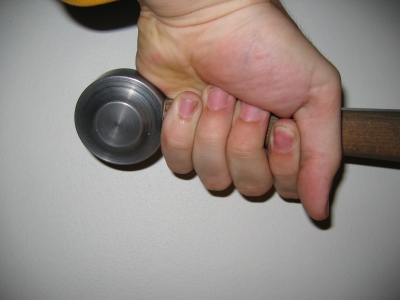
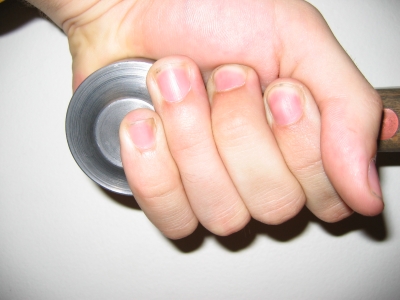
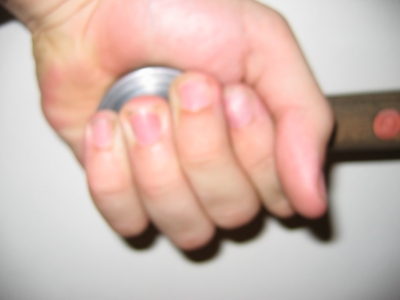



| Kel Rekuta wrote: |
| All of the above. :D
Jean, a short grip doesn't limit actions with two hands. You need to play with it more, you'll see its about how you move not the sword. A short blade, that's a different story. YMMV, ;) |
| Jean Thibodeau wrote: |
|
A very short twohanded grip that limits one to only some longsword techniques: No using of a long handle in close quarters as leverage for grappling or striking. I do wonder how practitioners of the longsword view using very short handles twohanded if they had to use one even if they prefer longer handles or very long handles ? |
| Greg Coffman wrote: |
| Doebringer taught to not grip the pommel. I am not aware of any others teachers who taught this. |
| Jack Yang wrote: |
| I disregard the masters who tells people not to grip the pommel, |
| Greg Coffman wrote: |
| Doebringer taught to not grip the pommel. |
| Jack Yang wrote: |
| I think this topic was touched upon in the features article about german longswords, under tha call to arms thingy. I am in defiance of what they said about the pommel, because, while i pefer not to grip the pommel while using a 2hander, i know people who has the habit and can fight as well as I, and I never saw what advantage I could take of it... |
| Quote: |
| Know also that a good fencer should before all things know his sword and be able to grip it well with both hands, between the cross guard and the pommel since you will then be safer than if you did grip it with one hand on the pommel. And you will also strike harder and truer, with the pommel swinging itself and turning in the strike you will strike harder then if you were holding the pommel. When you pull the pommel in the strike you will not come as perfect or as strongly. For the sword is like a scale, if a sword is large and heavy then the pommel must also be large and heavy to balance it like a scale. |
| Quote: |
| Following Doebringer's teachings, the interpretation within ARMA is that a cut is made with a very strong torquing of the hilt and a good follow-through. If you grip the pommel then you are unable to perform a proper torquing of the hilt, resulting in a weaker & shorter cut in which the hilt is pulled down, which in turn limits the follow-through.
|
| Greg Coffman wrote: |
| Doebringer is not talking about oberhaus but holding the sword in general, and I disagree with him. |
| Greg Coffman wrote: |
| I don't think this makes sense. Gripping the pommel and torquing the handle are independant issues. I can torque the handle on the hollow earth waster you have seen me carry with my hand on or off the pommel. I can even torque the sword better with my hand on the pommel as the distance between my hands is greater, therefore more leverage. |
| Greg Coffman wrote: |
| In reference to what you said later, I believe cutting to long point is fairly legitimate. It is a fine place to change to another cut and is an acceptable guard to adopt anyways. I can torque the sword into longpoint just fine. |
| Greg Coffman wrote: |
| If not gripping the pommel was important then we would see it taught elsewhere. If it was important to Liechtenauer then we would see it in Ringeck. But we don't. I assume that it is an addition by Doebringer and only his preference. |
| Greg Coffman wrote: |
| Personally I think he was practicing bad math. In the swing, the sword rotates around some point. This point can be the left hand or the right hand or somewhere in between. If the pommel is outside of the left hand then as the sword spins the pommel moves opposite of the blade. As the blade moves down the pommel moves up, adding it's momentum to the blade. However, by lengthening the distance between your hands you are able to acheive greater leverage to move the blade. The momentum of the pommel only counts after the sword is in motion. Your hands provide the energy to put the sword, and therefore the the pommel, into motion. The pommel's momentum only comes into play when you decelerate the sword after the cut as you have to fight against the blade's momentum and the pommel's momentum. |
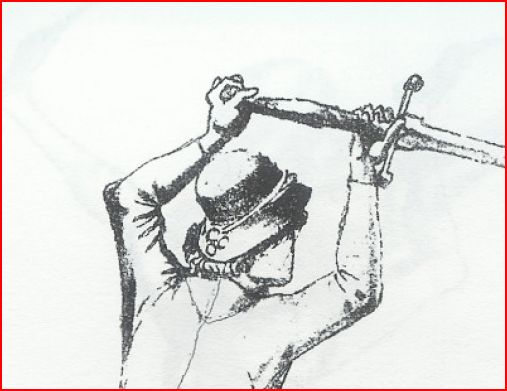
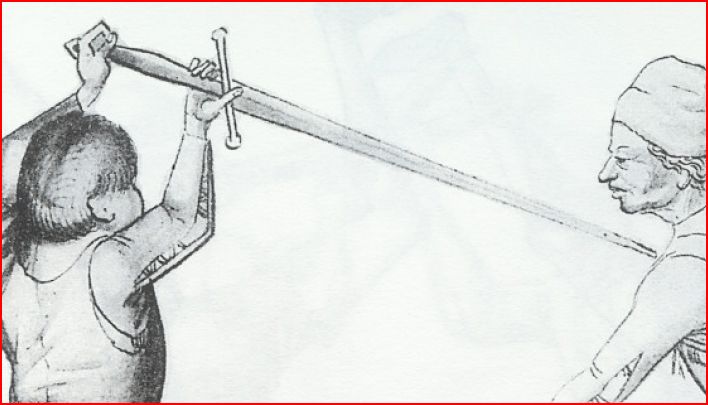
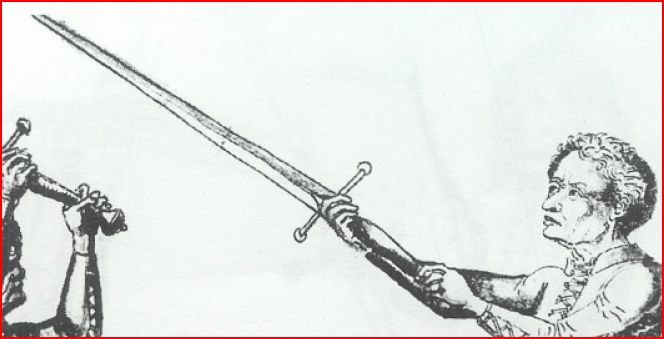
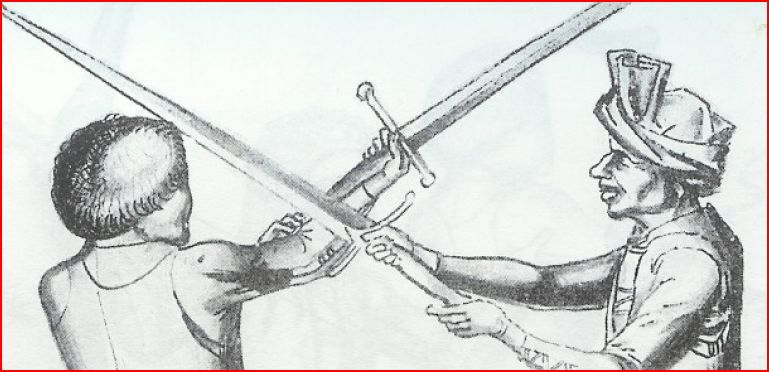
| Quote: |
|
If not gripping the pommel was important then we would see it taught elsewhere. If it was important to Liechtenauer then we would see it in Ringeck. But we don't. I assume that it is an addition by Doebringer and only his preference. |
| Randall Pleasant wrote: |
| For example, with a Zornhau they usually cut to longpoint rather than cutting through longpoint to the Wechsel guard. |